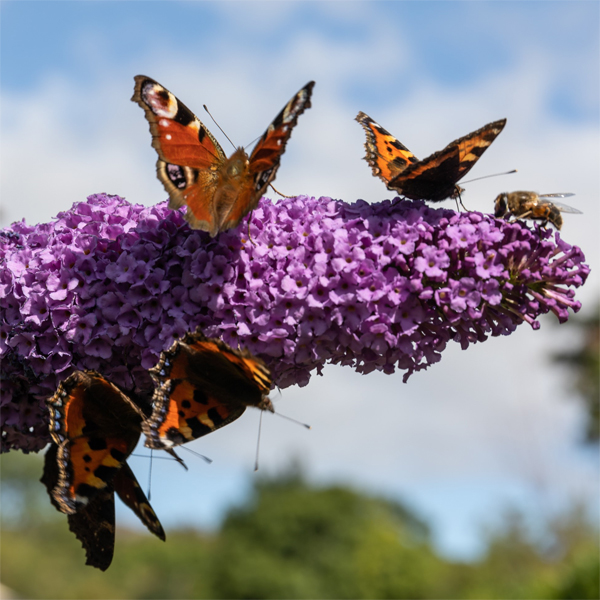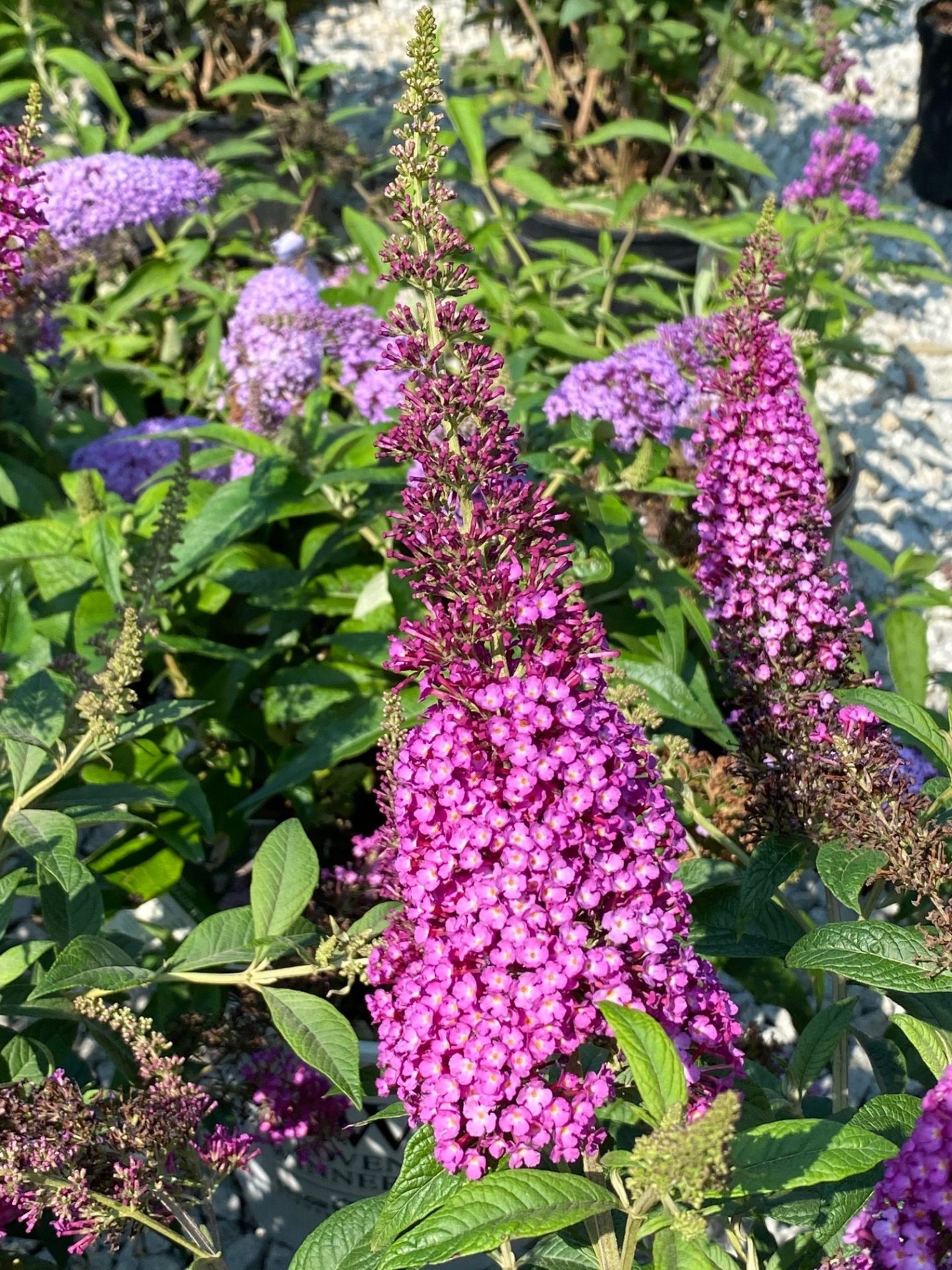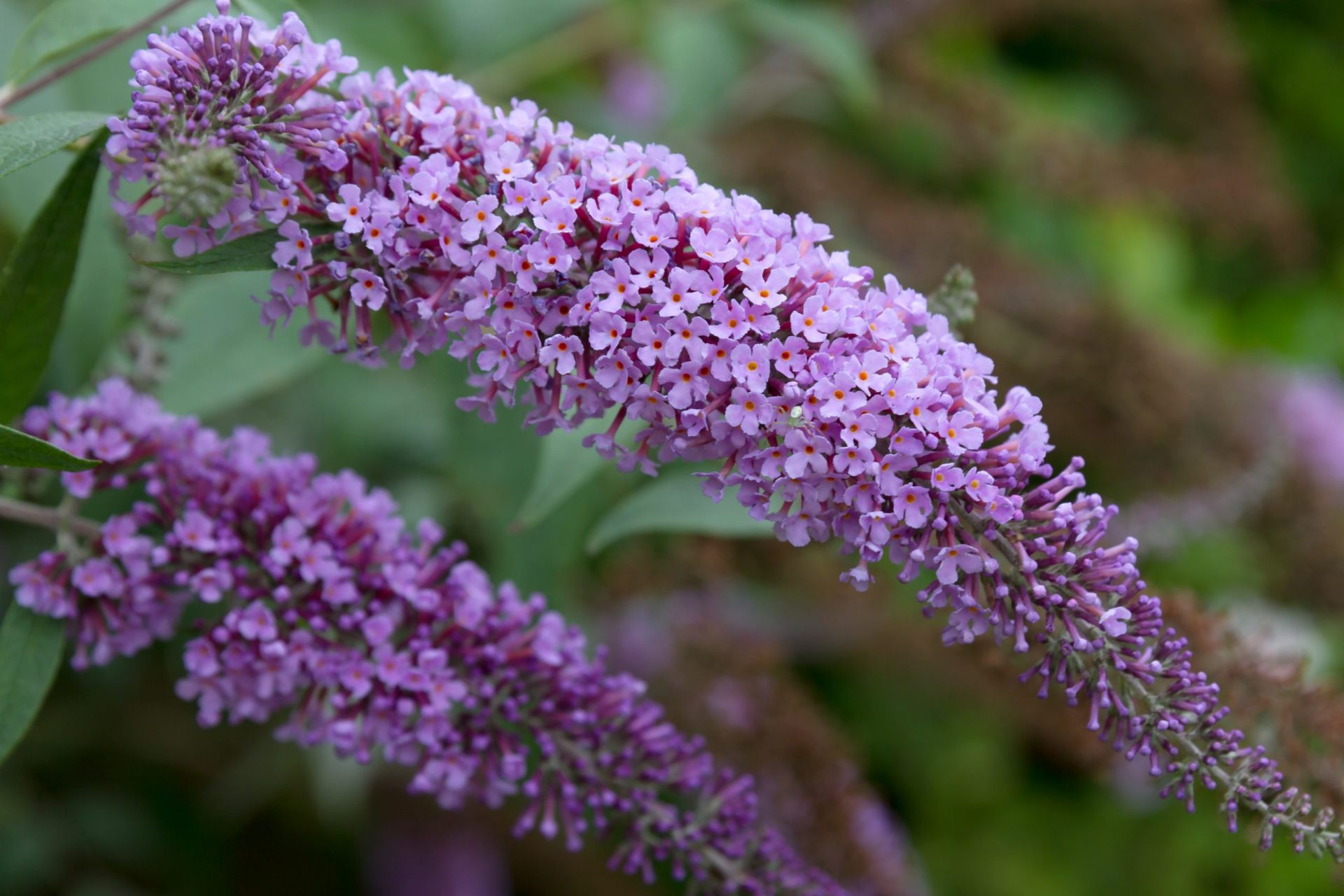
In late-summer gardens the Buddleias are one of the most commonly seen plants in this region—and for good reason. Few summer-flowing shrubs are so pest free and versatile in the garden, offering attractive features for such an extended season. The colors, scent and nectar of the numerous species and cultivars are superb for attracting butterflies, hummingbirds, bees and other pollinators. Buddleia choices available in garden centers today number in the hundreds.

Flower colors of various cultivars range from white to pink and purple tones, and many feature a sweet,
honey-like fragrance. Most produce their bloom spikes on new growth, so they can be pruned in any season to maintain plant size. Adaptable to most any soil, they prefer full sun for best color, tolerate dry conditions once established, and also grow well in containers. Individual cultivars can offer sequential bloom from early summer until frost, and continuous flowering is enhanced by “deadheading”—removing past-peak flowers.
Traditional Buddleia types, including B. davidii and B. alternifolia are rapid growers, some reaching as high as 6-10 feet in a single summer with long, arching branches. Recent Buddleia breeding and selection programs have successfully introduced more compact cultivars suitable for smaller gardens. Some new types like the “Lo and Behold®” and “Pugster®” series grow in more of a globe-shape, are heavy/continuous-blooming and reach only a few feet tall and wide. Most cultivars are winter hardy to Zone 5 where they tend to be “die-back” shrubs, losing some or all of their above-ground branches during winter, re-growing from their roots.

One horticultural characteristic considered detrimental for Buddleia is its tendency to seed-in and germinate in areas away from its original planting location. In some regions (not Massachusetts) it is considered an invasive plant. Flower colors of these volunteer seedlings usually differ from the parent plant, and sometimes they can out-compete. With their relatively compact root system, undesirable volunteers are easy to spade-out and remove when young. If you are concerned about unwanted seedlings, ask at your local garden center for the newer, sterile cultivars which produce little or no seed.
Oddly, even though Buddleia attracts a lot of butterflies, its common name, butterfly bush, could be a bit of a misnomer; according to native plant experts, no Native American caterpillar feeds on its leaves. To help support the entire life cycle of your local butterfly population, it’s a smart idea to include appropriate butterfly-health plants like aster, milkweed, willow, hollyhock, grasses and phlox in your butterfly garden.
About the Author
Wayne Mezitt is a 3rd generation nurseryman, a Massachusetts Certified Horticulturist, now chairman of Weston Nurseries of Hopkinton, Chelmsford & Hingham MA, and owner of “Hort-Sense”, a horticultural advisory business. He currently serves in various capacities on several horticulturally-related organizations, including the Massachusetts Horticultural Society at The Gardens at Elm Bank in Wellesley MA, and chairman for the Massachusetts Invasive Plant Advisory Group (MIPAG).









